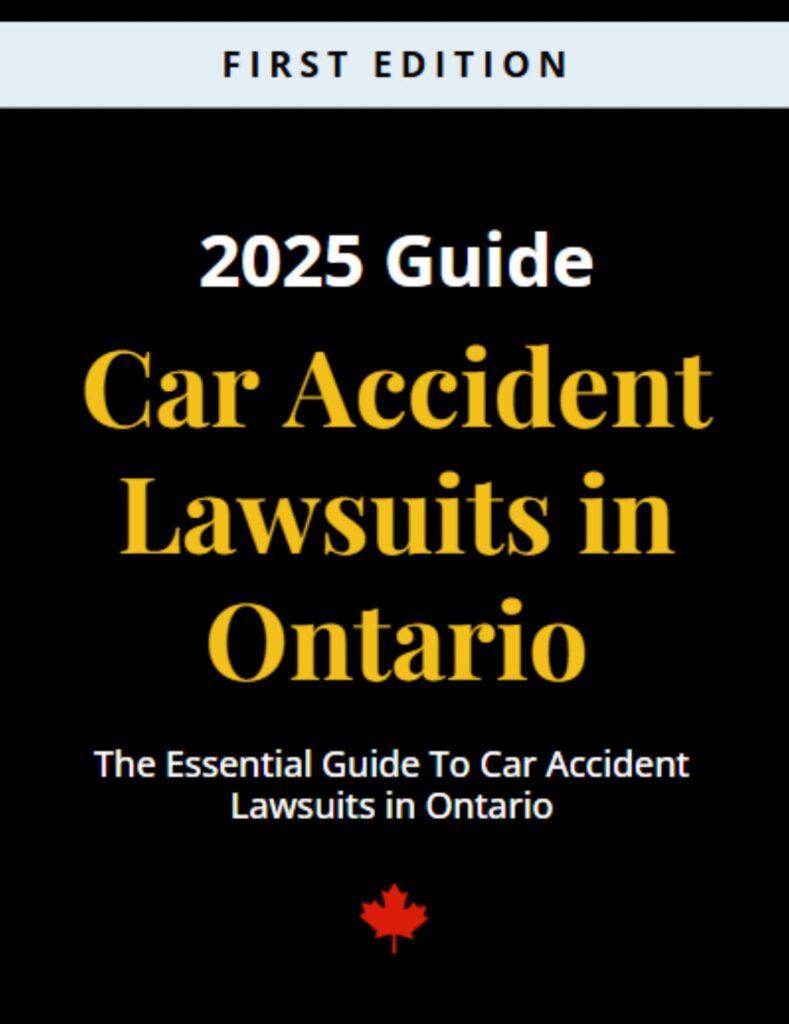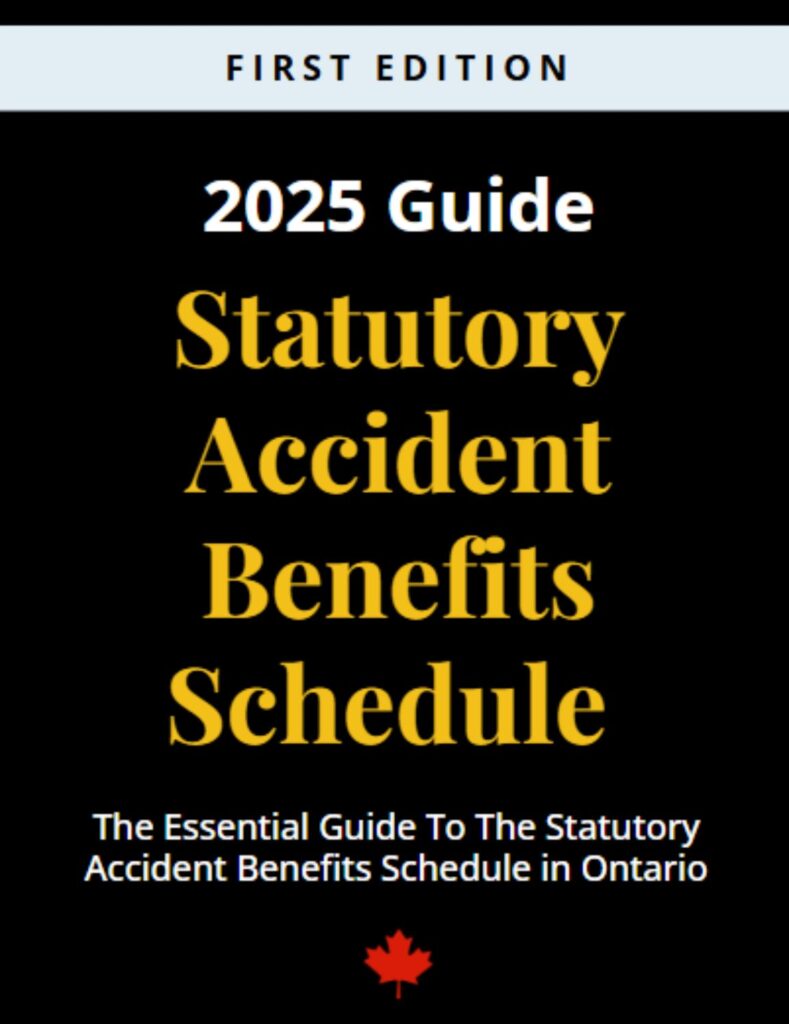Toronto Car Accident Lawyer
Find out if you have a case today.
Contact our Toronto car accident lawyers for a free consultation if you have legal questions regarding your car accident claim.
Table of Contents
Each year, dozens of people lose their lives in traffic accidents in Toronto and across the GTA. Despite the city’s efforts to reduce the number of fatal accidents through its Vision Zero program, the rate of traffic-related deaths continues to rise. According to recent news issued by the Toronto Police Service, in the last decade, over 600 Torontonians lost their lives in traffic accidents; more than half of these individuals were killed in pedestrian accidents.
Unfortunately, this trend is not limited to just the Toronto area. As a matter of fact, traffic fatalities in the province of Ontario have reached a historic high. Leading causes of accidents across the province include:
- Distracted driving
- Inattentiveness
- Recklessness
- Inebriation
- And other forms of negligence exhibited by drivers
As a result, innocent, unsuspecting road users can lose their lives in senseless and entirely preventable situations. The best way to protect yourself under these circumstances is by hiring a Toronto car accident lawyer.
At Preszler Injury Lawyers, our Toronto car accident attorneys are passionate about fighting for the rights of the clients we represent. If you are eligible to pursue a civil claim against a negligent driver whose misconduct caused you harm, our car crash lawyers may be able to help recover the compensation you need. To learn more, call 1-800-JUSTICE, or fill out our online contact form, and take advantage of a free initial consultation with an experienced Toronto car accident lawyer.
Motor Vehicle Accident Claims In Ontario

Understanding The Car Accident Claims Process In Ontario
When you’re injured in a car accident, there are multiple avenues for compensation you can pursue. The path you take and the compensation you’re eligible for will likely depend on the severity of your accident and your Long-Term legal goals.
Statutory Accident Benefits
In Ontario, individuals involved in a motor vehicle accident, including car accidents, are entitled to certain benefits regardless of who is at fault. These are known as Statutory Accident Benefits, governed by the Statutory Accident Benefits Schedule (SABS). This schedule is a critical part of accident law in Ontario, as it provides various types of benefits to individuals involved in motor vehicle accidents, such as:
- Income replacement benefits
- Medical and rehabilitation benefits
- Death and funeral expenses
- And more
Understanding the SABS is crucial for anyone who has been injured in a car accident, as it provides a framework for the compensation they are entitled to receive.
Your eligibility for accident benefits under SABS will depend on whether you were an insured person and injured in an “accident”. The claim process typically begins with notifying your insurance company about the accident within a specified timeframe. You’ll need to submit a completed application for accident benefits, which a lawyer can assist with to ensure accuracy and completeness. Timely and correct filing is crucial to avoid any delays or denials in receiving your benefits.
Car Accident Lawsuits
If the injuries you incur as a result of your car accident are particularly severe, SABS may not provide the full amount of coverage you need. In these cases, you can pursue a legal claim against the at-fault driver responsible for your accident through a lawsuit.
When involved in a lawsuit in Ontario, navigating the legal process can be complex. Personal injury litigation involves various regulations and statutes, such as the Highway Traffic Act and the Insurance Act. Understanding these laws is essential, as they impact how claims and compensation are handled, especially in cases of car accidents or motor vehicle accidents.
Typical stages you’ll go through when you pursue a lawsuit for a car crash include:
- Discovery: When you and your lawyer file your lawsuit, you and the at-fault driver (defendant) will need to exchange information and evidence related to the accident. This might include documentation like medical records, employment history, expert reports, and witness statements. By doing so, you can make the facts of the case clear and determine the strength of your claim.
- Mediation: Before you go to court, you will have the option to engage in mediation. The mediation process typically involves a neutral third party who helps both you and the defendant negotiate a fair settlement outside of court. Many car accident lawsuits are successfully resolved at this stage, saving you time, stress, and added legal costs.
- Pre-Trial: During pre-trial, you will attend a formal meeting that includes yourself, the defendant, and a judge. During the meeting, you’ll have an opportunity to discuss the issues you’re disputing, and the judge might offer guidance on how to resolve the case.
- Trial, if Necessary: If you’re unable to reach a settlement with the other party outside of court, your case will proceed to trial. During trial, both parties will need to present their evidence and arguments before a judge (and sometimes a jury). At the end of your trial, the judge will determine liability and what damages are to be awarded, if any.
- Settlement or Court Decision: A settlement can be reached at any point during the lawsuit process if you and the other party can come to an agreement. If you cannot agree on a fair settlement, the court will make a decision for you. This decision will be legally binding and allows the court to determine how much compensation you receive.
Each stage of your lawsuit, from filing to settlement or court decision, can benefit immensely from experienced legal representation. At Preszler Injury Lawyers, our car crash attorneys are ready to help you navigate the legal process at every stage. To discuss your legal options with our team, schedule your free consultation today.
LET US PUT OUR EXPERTISE TO WORK FOR YOU
Tell Us What Happened
Since 1959, we’ve helped thousands of Canadians get the compensation they deserve with their car accident claims. One of Canada’s oldest personal injury law firms, personal injury law is exclusively what we do. Book a free consultation today with our top-rated personal injury lawyers.
Our team is available 24/7 to speak with you.
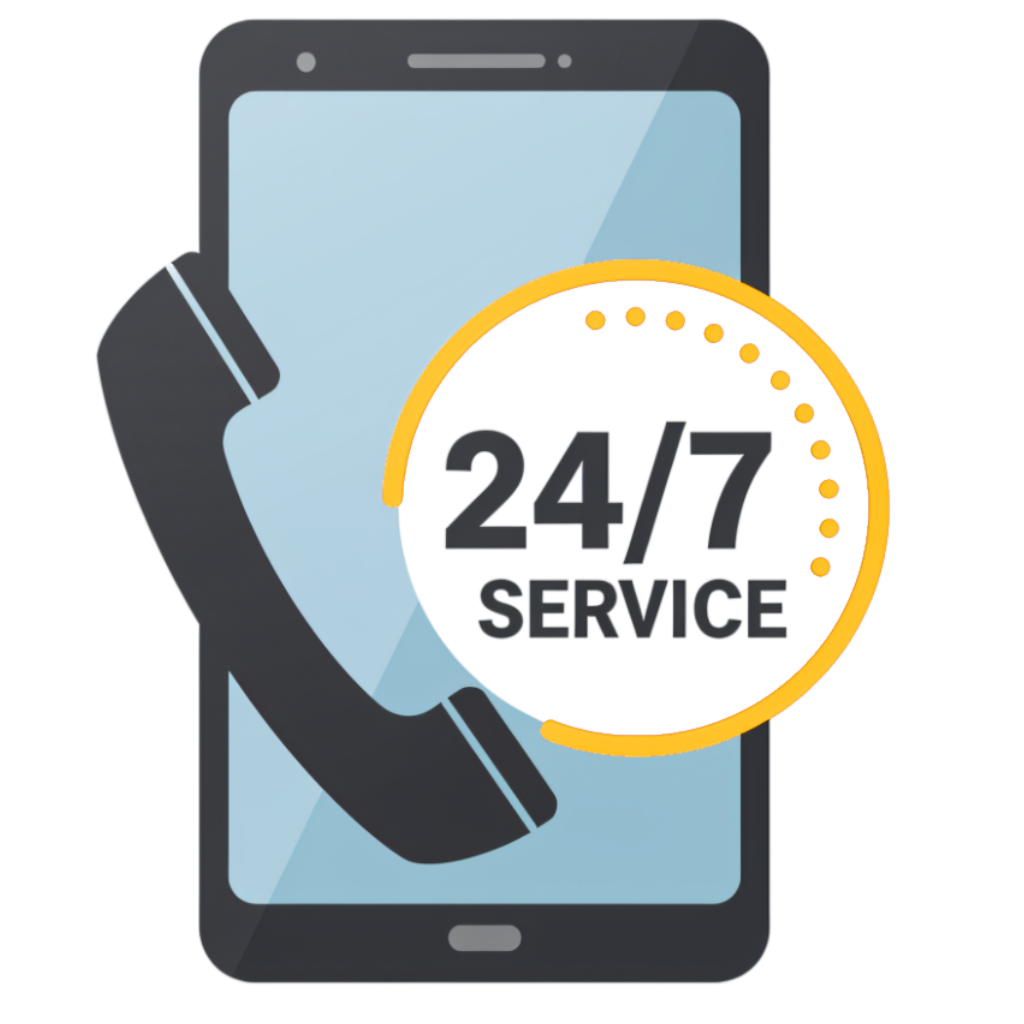
What Steps Should I Take After A Car Accident In Toronto?
When you’re involved in a car accident in Toronto, there are several crucial steps you should take to protect both your health and your legal case. You should:
- Seek Medical Attention: Getting medical attention if you’re injured in a car accident is of the utmost importance. Even if your injuries seem minor at first, they may escalate into more serious problems if you don’t receive appropriate help. For example, some brain injury or internal injury symptoms may not develop for days or weeks after an incident has occurred. In addition to ensuring your safety, having official medical records from the date of your accident can help strengthen your car accident claim.
- File a Police Report: If you’re able, you should file a police report about the accident right away. The respective police department in Toronto, or Ontario Provincial Police (OPP), plays a vital role in accident reporting. In the event of a car accident where there are injuries or there is a certain level of property damage, it is legally required that you file a police accident report. This report is not only crucial for legal and insurance purposes, but can also be helpful when claiming accident benefits. A police report will also provide an official account of the accident, which can be used to support your claim.
- Collect & Document Information: Maintaining a detailed record of all information related to your car accident can be extremely helpful if you wish to file a claim in the future. Whether you’re claiming accident benefits or you’re pursuing a lawsuit, keeping medical records, photos and videos of the accident scene, and collecting witness testimony can be beneficial to your case.
- Contact a Toronto Car Accident Attorney: It is important that you speak with a car accident lawyer before you sign any insurance documents or proceed with your accident claim. A legal professional will be able to advise you on your next steps, such as documenting your injuries and property damage. They will also review any offers you receive from insurance providers or an at-fault party to determine whether they reflect fair compensation for your injuries and losses.
By understanding steps to take after an accident, you can feel more confident about your car accident claim. Unfortunately, far too many Toronto vehicle accident victims are left in the dark when it comes to the personal injury legal process. Contacting an experienced car crash attorney as soon as possible will ensure that you’re ready to begin pursuing compensation from the moment you’re injured.
What Kind Of Compensation Is Available In A Toronto Car Accident Claim?
There are various types of compensation available to victims of car accidents in Toronto and throughout Ontario. The kind or amount you receive will depend on the severity of your accident and the effect it has had on your life.
In car accident cases, compensation for victims can vary widely but generally falls into two categories:
- Pecuniary Damages: Also known as financial damages or economic damages, pecuniary damages are meant to compensate victims for any financial losses they have incurred as a result of their accident. For example, you can be compensated for lost wages and medical expenses, both past and future. An experienced Toronto car accident lawyer, with the help of expert assessments, will help you calculate the amount of pecuniary damages you may be entitled to.
- Non-Pecuniary Damages: Non-pecuniary damages incorporate compensation for non-economic damages, like pain and suffering. These types of damages may apply in particularly severe cases, such as catastrophic injury or traumatic brain injury. For example, you may be compensated for things like emotional distress, reduced quality of life, and Long-Term suffering.
Calculating lost wages and medical expenses when pursuing pecuniary damages is a critical aspect of any claim. The calculation will involve assessing your injuries, the impact they have had on your ability to work, and the medical treatments required in both the short and long term. An experienced Toronto car accident lawyer will work with medical professionals and financial and vocational experts to accurately calculate these costs, ensuring that the victim receives fair compensation for all losses.
Because non-pecuniary damages like pain and suffering are more subjective, working with a personal injury lawyer can be extremely helpful. A legal professional will be able to argue and demonstrate the extent and impact of your non-economic suffering effectively. This way, you can pursue the full amount of compensation you may be entitled to.
Pursuing Compensation In An Ontario Personal Injury Claim

Negotiating With Insurance Companies For Car Accident Claims
When dealing with insurance companies for car crash claims, it’s crucial to approach negotiations with a strategy. It is common for insurers to try and minimize the amount they pay out to claimants to preserve their bottom line. However, by thoroughly reviewing your policy and working with a personal injury lawyer, you can make sure you receive the compensation you need to recover.
When negotiating with insurance companies over a car accident claim, you should:
- Inspect Your Policy: Any car accident attorney in Toronto would advise that you thoroughly understand your insurance policy before proceeding with a claim. You should know the extent of your coverage, including statutory benefits and third-party liability limits.
- Review Settlement Offers: Settlements are typically offered by insurance companies to resolve a claim without going to a hearing or trial. An experienced car crash lawyer can assess whether a settlement offer adequately covers all damages from a serious car accident, like medical care, lost wages, pain and suffering, and more.
- Avoid Common Pitfalls: There are many pitfalls you should aim to avoid when negotiating with insurance companies. One common pitfall is accepting a quick settlement that does not cover the full extent of your injuries and losses. Car accident victims in Toronto should be wary of initial offers that seem too convenient. It’s also crucial that you avoid providing statements or signing documents without legal advice.
Common Injuries In Toronto Car Accident Claims
Those who survive car collisions often sustain a variety of injuries ranging from minor to catastrophic. Victims may face lengthy periods of hospitalization, intense physical rehabilitation, costly medical bills, drastic adjustments to their lifestyle, and more.
Some injuries that are commonly sustained by victims include:
- Whiplash
- Soft tissue injuries
- Torn tendons
- Broken or fractured bones
- Cuts and lacerations
- Strains and sprains
- Musculoskeletal injuries
- Facial and dental injuries
- Internal organ damage
- Neck and back injuries
- Spinal cord injuries
- Paralysis
- Concussions
- Traumatic brain injuries
- Amputations
- And more
The Long-Term effects of serious injuries sustained in car accidents can be life-altering. Victims may experience ongoing physical, cognitive, and emotional challenges. These injuries often require Long-Term medical treatment, rehabilitation, and support.
Beyond physical injuries, car accidents can also take a significant emotional and psychological toll on victims. They may experience symptoms like anxiety, depression, or post-traumatic stress disorder (PTSD). Recognizing and addressing these issues is an essential part of the recovery process.
Depending on the nature of their jobs and the severity of the injuries they sustain, accident victims may be unable to continue working in their current occupational field or otherwise. In these scenarios, many injured victims find themselves in precarious financial situations due to loss of income. By pursuing an accident benefit claim or seeking additional damages, victims may gain access to:
- Medical treatment
- Physiotherapy
- Counselling
- Social workers
- Attendant care
- Occupational therapy
- And more
How Does Liability Work In Car Accident Claims?
If you were injured in a car crash resulting from another driver’s negligence, you may be entitled to compensation. That is because, in accordance with the province’s Highway Traffic Act, all drivers in Ontario have a legal responsibility to uphold a duty of care to other road users. This includes a duty of care towards:
- Other drivers
- Passengers
- Motorcycle riders
- Cyclists
- Pedestrians
- And other road users
By violating the rules of the road, negligent drivers fail to fulfill the duty of care they owe to other road users, jeopardizing their lives and their physical safety. If a driver’s violation of a traffic law leads to a collision in which another party sustains injuries, the negligent motorist who caused the car accident could be held liable for damages.
Distracted driving has emerged as a leading cause of car crashes in Toronto. It’s not just about the immediate risk of collision but also about the legal consequences that follow. Those found guilty or liable for causing accidents due to distractions face severe legal repercussions, including claims against their auto insurance policy and potential car accident lawsuits. Experienced car accident lawyers are instrumental in handling such cases, whether representing the distracted driver or the victims.
How To Choose The Right Car Accident Lawyer For You
When you decide to pursue a car accident claim, making sure you select the right lawyer for the job is important. An experienced car accident lawyer can help you pursue the best outcome for your case. When selecting your team and the law firm you want to work with, you should consider things like:
- Track Record: Examine the kind of experience your car accident lawyer has, along with their track record in handling motor vehicle accidents. You might inquire about basic information like their past cases, trial experience, win record, or disciplinary record. Lawyers who have a strong history of successfully handling car accident cases in particular may be a good choice. In addition, they’ll have a deep understanding of local personal injury laws and regulations in Ontario, meaning they can help you navigate SABS, Ontario insurance policies, litigation, and more.
- Communication Skills: The qualities of an effective personal injury lawyer go beyond legal knowledge. Their ability to communicate with clients is just as important. The car accident lawyer you choose to work with should be a clear communicator and keep you well-informed throughout the process. They should also be able to answer your questions effectively and take the time to understand the details of your case in full.
- Comfort: The most important part of choosing legal representation is establishing a rapport with your attorney. You should consider lawyers who are empathetic to your situation, especially if you’ve suffered serious injuries. Feeling comfortable throughout the legal process can help instill greater confidence in both you and your legal team.
How Our Toronto Car Accident Attorneys Can Help People Who Have Been Injured In Car Accidents
In Toronto, car accident attorneys play a pivotal role in assisting those affected by motor vehicle accidents. These legal professionals are experienced in navigating the complexities of motor vehicle accident claims, ensuring that the rights of injured car accident victims are protected. They provide crucial guidance when it comes to legal procedures, filing accident benefit claims, commencing lawsuits, and representing clients in negotiations with insurance companies and in courtrooms.
When you work with Preszler Injury Lawyers, our experienced car crash attorneys will help you by:
- Crafting a Comprehensive Case: Our Toronto car crash lawyers have years of experience creating compelling cases and claims for our clients. We’ll help you collect and organize important evidence like medical records, police reports, and witness testimonies to help substantiate your claim. Whether you need assistance filing an accident benefit claim or you wish to pursue a lawsuit against an at-fault driver, we’ll be there to help you pursue the maximum compensation you’re entitled to.
- Negotiating a Fair Settlement: Negotiating a fair settlement is a critical phase in any car accident claim. Our experienced personal injury lawyers in Toronto are adept at this process, ensuring their clients receive a settlement that adequately compensates them for the injuries they’ve suffered. Negotiations may involve discussions with the insurance company or the at-fault driver’s insurance company. Our lawyers will present evidence, such as medical records, employment records, income tax records, and expert opinions, to justify your claim’s value. We aim to cover all expenses and impacts of the accident, including pain and suffering, medical expenses, and lost wages.
- Representing You in Court: When you have to go to court, having legal representation on your side can make all the difference in your claim. If you’re unable to reach a fair settlement with the other party, we’ll present your evidence in court and argue for the compensation you deserve.
- Empathetic Support: At Preszler Injury Lawyers, our Toronto car crash lawyers understand the physical, emotional, and financial toll that car accidents have on victims. That’s why our team has a proven track record of offering empathetic support to our clients. Let us handle the legal complexities of your case so you can focus your time and energy on what matters most: your recovery.
With years of experience handling car accident claims for our clients, you can feel confident when you work with Preszler Injury Lawyers on your case. When it comes to motor vehicle accidents, we assist with a wide range of case types, such as:
- Bar liability
- Bicycle accidents
- Catastrophic injuries
- Defective car accidents
- Distracted driving accidents
- Drunk driving accidents
- Hit-and-run claims
- Motorcycle accidents
- Negligent maintenance claims
- Insurance disputes
- Pedestrian accidents
- Rear-end collisions
- Roadway hazards
- T-bone accidents
- Toronto Transit Commission (TTC) & Bus Accidents
- Uninsured claims
- Automobile defects and recalls
- Truck accidents
- Long-Term disability claims
- And more

How Much Do Car Accident Lawyers In Toronto Cost?
The cost of a car accident lawyer can vary depending on the type of claim you’re filing and the firm in question. At Preszler Injury Lawyers, we work on a contingency fee basis. This means that you don’t pay any money unless we successfully win your case for you. As a result, you won’t pay anything upfront for your free initial consultation or throughout the entirety of the legal process.
If we do successfully recover compensation for you, our Toronto car accident lawyers will take a percentage of your accident settlement as our fee, as permitted by provincial legislation. When you work with our team, you’ll have a clear understanding of these fees before proceeding with a claim. We aim to have transparent discussions about legal fees to ensure that our clients are fully aware of potential costs and how they may affect their net settlement amount.
Toronto Car Accident Claims: Frequently Asked Questions
What Are The Chances Of Winning A Car Accident Lawsuit?
The success of personal injury lawsuits varies on a case-by-case basis. The outcome of a claim might depend on the strength of evidence you can provide to prove that another party was negligent. To increase your chances of winning, you should be ready to provide detailed documentation like:
- Medical records
- Police reports
- Witness statements
- Financial records
- And more
Working with an experienced car crash lawyer may improve your chances of success, as they will know how to organize and present your evidence in a compelling way.
What Is The Average Settlement For A Car Accident?
There is no fixed “average” amount of compensation awarded in car accident cases. The restitution you receive will depend on the severity of injuries you have sustained, your financial losses, and Long-Term impacts on your life.
For example, when minor injuries are involved, cases may be settled for a few thousand dollars. In cases of severe injury like TBIs or spinal cord damage, some settlements may reach six- or seven-figures.
An experienced car crash attorney will be able to calculate the damages you have incurred so you can pursue the maximum amount of compensation you are entitled to.
What If I Don’t Have My Own Car Insurance?
Because of Ontario’s no-fault insurance system, you can still receive coverage for a car accident without car insurance. You will be able to access Statutory Accident Benefits as a passenger, pedestrian, or cyclist either through the driver’s insurance or another involved party’s insurance.
In the case that no insurance is available, you may be eligible to claim compensation through Ontario’s Motor Vehicle Accident Claims Fund. A Toronto car accident lawyer will be able to determine which insurer is responsible for coverage and guide you through the claim process.
What If The Accident Was My Fault?
Even if you are at fault for an accident, Ontario’s no-fault insurance system will supply benefits for you through the Statutory Accident Benefits Schedule. If you are fully at fault, you might not be eligible to sue another driver. However, you may still qualify for compensation like income replacement and medical benefits while you recover.
If you’re partially at fault for an accident, you might be able to recover partial damages through a lawsuit. The amount of compensation you’re eligible to receive will depend on the shared degree of responsibility between parties. A lawyer will be able to assess your case so you can determine fault and your best path towards compensation.
Questions Our Toronto Car Accident Attorneys Will Ask During Your Free Consultation
When you meet with our Toronto car accident lawyers for the first time, we aim to get a sense of your case and what your legal options will be. You should be prepared to answer a number of questions so we may get better acquainted with you and your situation. You can expect questions about:
- Date & Time: Our lawyers will want to know the date and time that your accident occurred. If you’re unsure about the timing of the accident off the top of your head, it should be included in the police report you filed. This is important for our lawyers to know so they can take important limitation periods into consideration when assessing your case.
- How Your Accident Happened: During your initial consultation, it will be helpful for us to get a full rundown of your accident and how events unfolded. The more detail you can use to describe your accident, the better. By understanding how the accident occurred, we can help you piece together a timeline and consider things like liability and fault.
- Police Reports: Our lawyers will want to know whether you have a police report from the day of the accident. We might ask about when the police were called and who called them. If you are able to bring a copy of your police report with you to your consultation, this will also be helpful. Police reports can serve as important evidence when it comes to proving fault in car crash claims.
- The Other Driver’s Admission of Fault: If the other driver involved in your car wreck has already admitted fault, this can be beneficial to your case. This is especially true if this admission is contained within your police report.
- Your Injuries: Be prepared to share a complete list of every injury you sustained following your accident. We might also ask questions about the severity of the injuries and whether they are expected to affect you Long-Term.
- Medical Care: Our lawyers will ask when you first received medical care for injuries you sustained in your accident, whether it was at the scene of the accident, a hospital nearby, or a clinic weeks later. It’s also important for us to know where you received medical attention.
- Records of the Accident: We’ll want to know if you have any photos or videos of the accident scene itself. In addition, we may ask about medical records you have documenting the injuries you sustained in the accident.
- Income Loss: We may ask whether you lost any wages or income while recovering from your accident. It may be helpful to come prepared with a rough idea of how much time off work you had to take, if any, as a result of the crash.
- Insurance Provider: You should come prepared with information about your insurance provider and policy. If you have information about other involved party’s insurance information, this may also be helpful.
- And More
You will also have the opportunity to ask us any questions you may have about the legal process.
What Languages Do Our Toronto Car Accident Attorneys Speak?
At Preszler Injury Lawyers, our team is proud to offer services in a variety of different languages. We strive to ensure that our clients injured in car wrecks and car crashes have access to the legal help they need, regardless of the language they speak. Our multilingual Toronto car accident lawyers can assist you in:
|
|
|
No matter where you’re located in Canada, our multilingual team at Preszler Injury Lawyers can help. To contact a team member, schedule a free consultation online today and indicate your preferred language in your message to us. We respond in 24 hours or less.
Involved In A Car Accident In Toronto? Speak With Our Legal Team Today
In the shocking aftermath of a car accident that leaves you with severe injuries, it can be difficult to know what options are available to you, and where you can turn to find accountability and restitution. By taking advantage of a free, no-obligation consultation with our Toronto car accident lawyers, you will have the chance to receive personalized, case-specific legal advice and learn whether you might be entitled to pursue compensation.
If you have any questions and would like to schedule a call with our legal team, you can contact us online or call 1-800-JUSTICE now. During this call, you can ask any questions as they relate to your accident and/or claim, and we’ll discuss your options and possible outcomes.
Regardless of where you’re located in Ontario, we may be able to help you. Don’t delay – call our firm now. Our lines are open 24/7. Contact us today for a free consultation with our Toronto car accident lawyers.
More Toronto Practice Areas
Proudly Canadian
Award Winning Personal Injury Law Firm
We are proud to be one of Canada’s oldest and long-standing personal injury law firms. Since 1959, we have been providing exceptional legal services and have established ourselves as leading personal injury lawyers in the Canadian legal community. It’s not just the awards that recognize our achievements, but also the wins we’ve achieved for thousands of Canadians with their car accident claims.


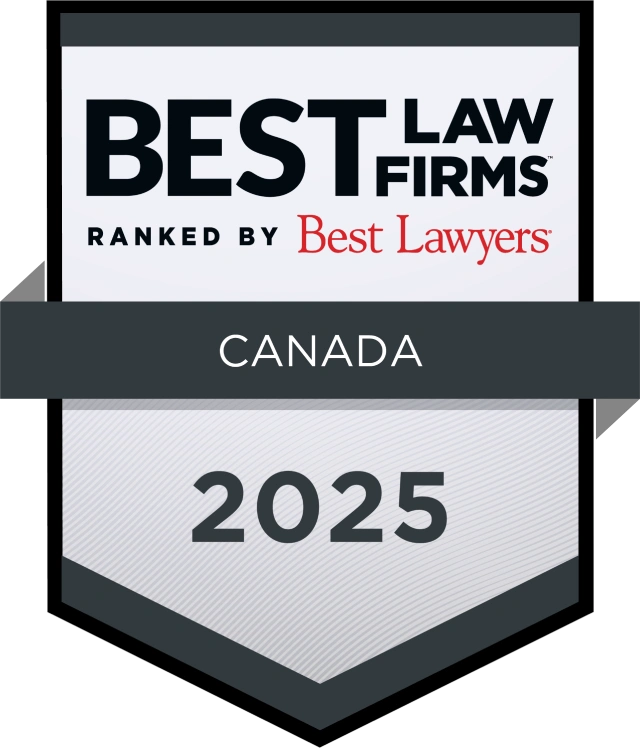
Case Results
car accident Settlements
Please note that past results are not indicative of future results as each scenario presents itself with its unique set of circumstances. But here are some car accident related wins we’ve had for our clients.
More car accident Topics
Here’s more information on car accident related topics that we think you might find helpful.

car accident
|
March 19, 2025
Recognizing Concussion Signs After a Car Crash
The shock of a car crash can be overwhelming. The resulting injuries can be devastating, particularly concussions. Recently, there has been an increasing awareness of…
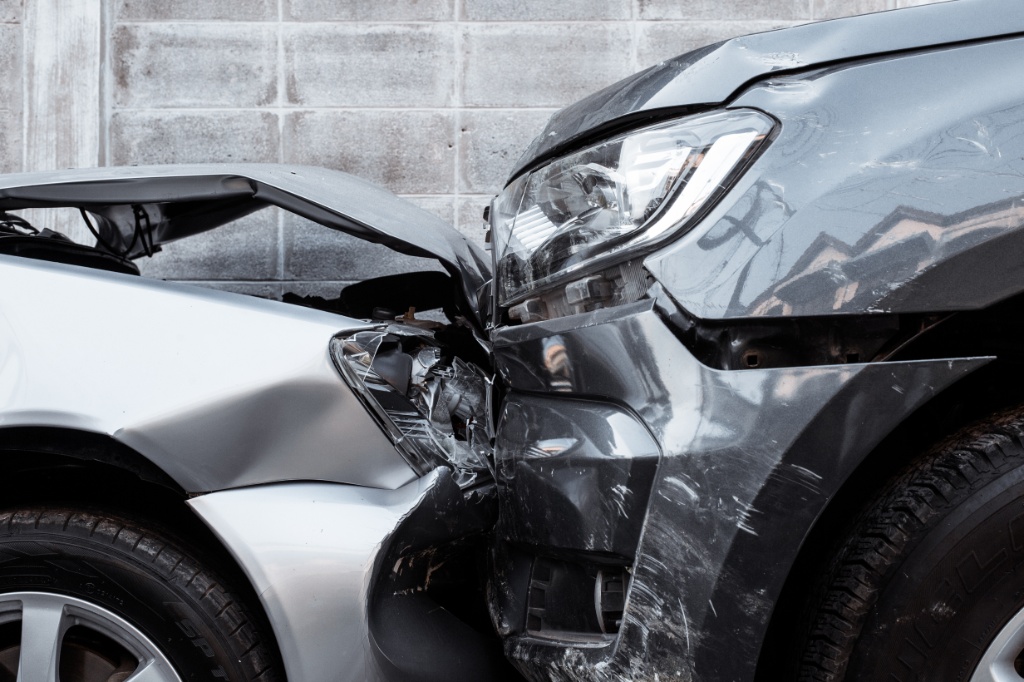
car accident
|
July 3, 2024
Motor Vehicle Fatalities on the Rise in Canada – 2024 Data Study
Overall Findings: After three decades of decline, the number of motor vehicle fatalities in Canada went up by 6% in 2022 The number of fatalities…

car accident
|
September 13, 2023
Traffic Signals: Be Careful Even on a Green Light
From a young age, we are taught that our traffic signals designate directions by colour: red means ‘Stop ‘; green means ‘Go.’ Designating traffic directions…
More car accident Video Resources
We also have some videos on the topic of car accident claims
car accident FAQs
Here are some commonly asked questions for car accident claims
How soon after an accident can I start receiving loss of income benefits?
Loss of income benefits are typically paid to injured victims of motor vehicle accidents once their claim has been approved by their auto insurance provider. To receive these benefits, you may be required to provide your insurer with documentation from your employer, physicians, and other medical experts stating that your injuries prevent you from working. You will not be granted loss of income benefits for any wages lost during the first 7 days after the injury-causing collision, however you may be eligible to claim lost income for missed working days after that time limitation has elapsed.
What happens if my injuries meet the threshold of catastrophic impairment?
If your injuries meet the threshold of catastrophic impairment, you may be entitled to additional benefits such as increased medical and rehabilitation benefits, attendant care benefits, and housekeeping and home maintenance benefits.
Do my family members have the right to sue the at-fault driver?
Close family members of a person who has been injured or killed in a motor vehicle accident may be able to sue the at-fault driver for their own losses such as loss of care, guidance, and companionship.
How much money can I receive to cover lost wages before and after trial?
The amount of income replacement benefits you can receive will depend on your pre-accident income, but typically these benefits can cover up to 70% of your gross income before the accident, up to a maximum of $400 per week. If you pursue a civil claim against the at-fault driver whose negligence caused your collision, you may be able to recover 100% of your gross income loss and earning capacity after the trial.
Got more questions?
If you have more questions or need legal help regarding car accident claims, contact our legal team for help.
We’re happy to help.
INJURED IN AN ACCIDENT IN Toronto?
Book a FREE Consultation
With Our Legal Team Today
Our phone lines are available 24/7
During your free consultation you will find out if you have a case worth pursuing as well as answers to any legal questions you may have.

